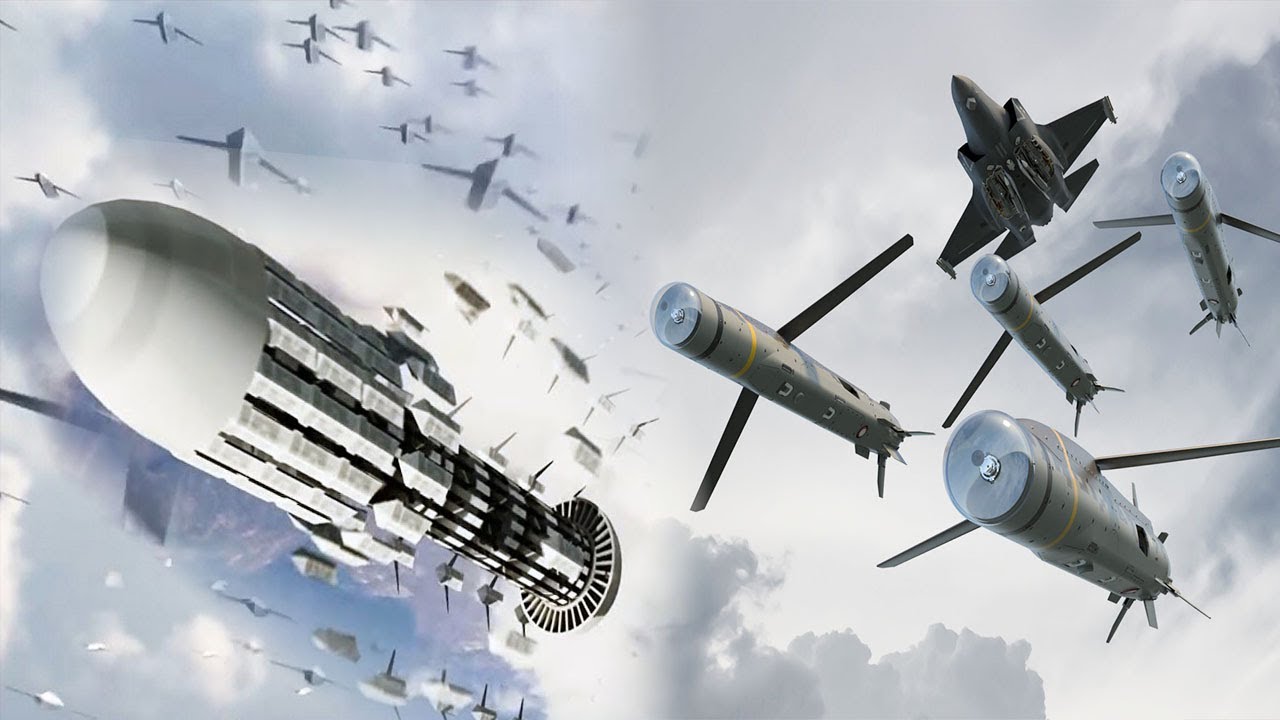The skewed cost-to-benefit ratio in Ukraine, with multimillion-dollar air defense having to shoot down cheap drones and cruise missiles, seems to have spurred a US Air Force (USAF) plan to acquire a full fleet of low-cost cruise missiles, taking a cue from their adversaries’ tactics.
The Air Force Research Laboratory (AFRL) announced that the AFWERX military innovation center has launched the Weapons Program Executive (PEO) Design and Sprint Challenge initiative, focused on developing advanced weapons technologies and strategies, “with a low-cost cruise missile as its first development goal.”
AFWERX is a USAF program that undertakes innovation and research in collaboration with scientists, engineers, and academia.
The final product should be cheap, mass production-friendly, and can also be employed by US allies, suggesting Washington has its partner nations in Europe, the Middle East, and Asia in mind.
Russia has demonstrated this capability to engage and exhaust sophisticated surface-to-air missile (SAM) systems, and the US is possibly replicating the tactic and acquiring a similar capability.
Likewise, a swarm of cheap and largely accurate cruise missiles will also have significant utility before China in the western Pacific as well. The People’s Liberation Army (PLA) has the world’s largest and diverse arsenal of cruise and short, medium, and long-range ballistic missiles to simultaneously strike US and Japanese bases and warships.
An offensive against the PLA Air Force and Navy can be credibly aided by mass attacks from such missiles that can overwhelm its Integrated Air Defense System (IADS).
Innovation Competition
According to reports, the inaugural Weapons PEO Challenge involves “designing an enterprise test vehicle to be the foundational architecture for future low-cost missiles, with a 500-nautical miles range, high subsonic speed, and a cost target of $150,000 per unit for bulk orders.” Beside weapons capacity, participating teams are expected to ensure “affordable, mass delivery (and) the solutions must be scalable and accessible to partner nations and allies.”

Russia has often used its Geran-2 one-way attack kamikaze drones in coordinated strikes with the Iskander ballistic missiles, air-launched cruise missiles like the Kh-101, or the sea-launched Kalibr land-attack cruise missiles.
While Ukraine does record a significant number of shoot downs, sometimes downing all of the fired projectiles, it does have to expend its own Western-origin and costly missile systems like the Patriot PAC-3, Norwegian Advanced Surface-to-Air Missile (NASAMS), or the IRIS-T.
These missiles are not manufactured in Ukraine and have been donated from the US’s or Germany’s own stocks, depleting their own stocks. Russia, meanwhile, has been steadily manufacturing missiles, according to assessments made by Western think tanks.
A June 2023 report by the Center for Strategic and International Studies (CSIS) outlined how it was “unrealistic” to expect Russia to ever run out of missiles.
“Sanctions and export controls can, at most, limit the quantity and quality of strike assets Russia can acquire. Russian production of higher-end cruise and ballistic missiles will never fall to zero. Despite Western sanctions and export controls of key microelectronic components, Russia has found workarounds to continue producing missiles,” the report said.
What the US Air Force Wants
The US had recognized this problem far back, even before the war in Ukraine, when strategic tensions with China arose in the western Pacific. Programs like the USAF’s Rapid Dragon, that involves transport aircraft like the C-17 Globemasters launching ‘pellets’ holding groups of six to eight ALCMs like the AGM-158 JASSM-Extended Range (JASSM-ER), was a step towards this direction.
However the current effort by AFWERX has a long time to fructify. The participating teams will begin with figuring out the technical configuration for a simple cruise missile that cannot be too sophisticated in its target tracking, engagement, maneuvering or propulsion capabilities.
For instance, being able to receive mid-course updates or changing direction to avoid medium and close-range AD systems during the terminal phase of the attack is something unlikely to be incorporated. Such capabilities require advanced computing and processing technologies, which will raise the per unit cost to well above $500,000.
What the USAF appears to envisage is a missile where target coordinates can be pre-loaded before launch, fired in coordination with several such missiles from multiple directions, that can speed towards a target area and overwhelm enemy SAM assets. One such single mass salvo itself will be synchronized with other aerial actions, like air-to-ground strikes or air dominance missions.
- The author can be reached at satamp@gmail.com
- Follow EurAsian Times on Google News